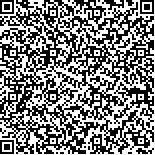下载中心
优秀审稿专家
优秀论文
相关链接
摘要

中国首颗海洋水色业务卫星(HY-1C)搭载有水色水温扫描仪(COCTS)、海岸带成像仪(CZI)、紫外成像仪(UVI)等多套光学载荷,已于2019-06开展业务化运行。溢油是海洋环境监测的重要目标之一。近年来,光学遥感对海面溢油不同污染类型的识别、分类与估算原理得以阐明,其技术优势获得认可,能有效促进海面溢油的精细化定量探测。本研究以中国近海,主要以2019-02-20中国南海东沙岛附近海域一次溢油事件为例,收集了HY-1C星COCTS和CZI数据,并获取了同一天的VIIRS、MODIS Terra & Aqua遥感数据,开展了海面溢油的识别分类及其对比分析,重点评估COCTS与CZI光学载荷对海面溢油识别的效能。结果表明:在弱耀光对比条件下,COCTS、CZI、VIIRS均能有效识别此次东沙岛溢油,且COCTS对溢油的识别能力不弱于VIIRS数据;CZI不仅能识别此次溢油,还能区分此次溢油形成的海面油膜与溢油乳化物,从而提供更多的判定信息;CZI数据中,不同溢油污染类型的光谱信号离散度大于清洁海水平均噪声,展现了溢油量估算的潜力。HY-1C星光学载荷展现了优良的辐射分辨率、高信噪比等性能,随着HY-1D星的发射,双星组网观测还能提供更佳的时相分辨率数据,未来会在海洋溢油的实时、定量、精细化观测中提供丰富的数据支撑。
An ocean color satellite of China (Haiyang-1C, HY-1C) was launched on September 7, 2018, equipped with several optical sensors, such as the Chinese Ocean Color and Temperature Scanner (COCTS), Coastal Zone Imager (CZI), and ultraviolet imager. These instruments were tested in orbit for 6 months and used in ocean and coastal zone environmental monitoring in June 2019. The optical remote sensing of oil spills is a key research direction in marine environmental monitoring. Significant progress has been made in recent years, demonstrating its ability to detect, classify, and estimate the volumes of various oil spills. In this paper, the marine oil spill incident near Dongsha Island in the South China Sea on February 20, 2019 was used as a case study. COCTS and CZI captured the oil spill, and the oil spill area was scanned using the Visible Infrared Imager Radiometer Suite (VIIRS) and Moderate Resolution Imaging Spectroradiometer (MODIS Terra & Aqua) on the same day. The angles (between the viewing direction and the direction of mirror reflection, θm) of COCTS, CZI, VIIRS, and MODIS Terra and Aqua images were extremely small, indicating that sunglint reflectance in these images can be ignored. Therefore, the light absorption and backscattering characteristics of oil spills and surrounding oil-free seawater account for the differences among the images. In other words, these light signals can only weakly detect marine oil spills compared with strong sunglint reflection. However, if backscattering can be distinguished, it can be useful in the identification of various types of weathered oil. COCTS, CZI, and VIIRS capture marine oil spills with high radiometric resolutions and signal-to-noise ratios. Moreover, oil spills form oil emulsions and non-emulsified oil slicks, which can be distinguished by CZI due to its high spatial resolution (~50 m). Uncertainty analysis of COCTS and CZI shows that the difference between an oil spill and the oil-free seawater of COCTS or CZI is obvious, implying that CZI can be used in estimating the volumes of oil spills. In the near future, the same sensors in the HY-1D satellite will be available, and a network observation system of the HY-1C/D satellite will provide global images daily. This resource will likely play an important role in future ocean color remote sensing.

